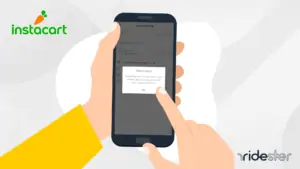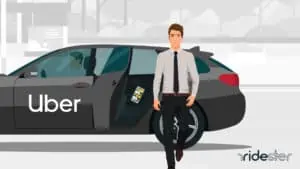Key Takeaways
- Common e-scooter issues include battery, controller, motor, throttle, and electrical problems.
- Battery troubleshooting involves checking charger, BMS, voltage, and prongs for faults.
- Controller issues usually require checking connections; motor problems might need cleaning.
- Electrical component troubleshooting includes inspecting wires, connectors, fuses, and circuit breakers.
1. Troubleshooting an electric scooter battery
An electric scooter battery is the most expensive component.
Keeping it in an optimal working condition is a sure way to keep your investment working properly for long.
Some indications that your e-scooter battery may need some troubleshooting include where it’s cutting out occasionally.
Below are the tips that I have personally used for the electric scooters in our database to troubleshoot any battery problems:
Inspect the charger
It happens sometimes that a charger may be green to show that an e-scooter battery is full while in the real sense it’s a low voltage.
If you suspect that your charger isn’t providing an adequate charge to the battery, it’s important that you check it.
Simply, get a voltmeter or a multimeter and connect it to the charger.
If these devices show Zero volts or a Voltage that is less than the rated voltage, then it might a case of a faulty charger.
For instance, if your battery charger is rated to be 36V 10Ah and after testing it, it shows a voltage higher than 36V, then it means the charger is effective, and checking another component to troubleshoot is the best option.
Conversely, if after testing the charger’s voltage you get any amount less than 36V, then you will have to replace the charger with another original one.
If the voltmeter or multimeter shows that the charger produces an accurate voltage, then you can read further to look at other troubleshooting tips.
Inspect the BMS
The BMS, short for Battery Management System, is the responsible component for preventing undercharging or overcharging of an electric scooter battery.
Again, the BMS initiates a cut-out in case of the battery overheating.
In case your electric scooter experiences regular cut-off voltages, then the BMS could be dead or the battery has some dead cells.
After testing the battery with a multimeter, you can know if it’s the culprit here.
If the voltage is as expected, then the issue could be with the BMS.
A dead Battery Management System is a sure path to killing the battery since charging isn’t optimized.
You will have to replace a dead BMS before damage occurs to your battery.
If the multimeter showed that the battery didn’t hold a charge as expected, then the BMS is fine but the battery isn’t.
Replace the battery for optimal riding.
Inspect the voltage
If your electric scooter doesn’t seem to power on as expected, then you may be dealing with low voltage.
Voltage is what makes the motor run properly and in case it’s low, then you have to charge the battery to fullness.
To inspect the voltage, you will need to get a functional voltmeter and fasten it on the battery’s charger connector.
You can also follow the longer route and attach the voltmeter to the negative and positive prongs.
In case the battery voltage depreciates fast while testing with the voltmeter, then there are a couple of reasons to explain this:
- There are some dead battery cells
- You have stayed for long without charging the battery; thus, it’s getting defective.
If you find out that the battery has little to no charge while using the voltmeter, then connect the scooter to the charger and you will have solved this problem.
If your scooter was just a case of low voltage, charging it to fullness will have solved the problem.
If inspecting the battery shows that there are defective cells, take the scooter to a repair shop for cell replacements.
However, if it’s a case of a defective battery, we highly recommend that you take it out and replace it.
Keeping on charging a defective battery is a sure way to increase causing a fire.
One of the leading reasons why an electric scooter battery can be defective is if it has become old enough.
Averagely, scooter batteries that have completed 500 charging cycles and stayed for 3 years tend to wear down quickly and become defective faster than newer ones.
Pro Tip: When storing an electric scooter in the winter or for a long time, we recommend that you leave the battery charged at between 50 to 75%.
After a month, charge the scooter once more to reach those given percentages.
Again, always ensure that your scooter has cooled down before plugging it into the charger. Charging the battery when it’s still hot interferes with optimal charging and makes the batt wear down more quickly.
How is the charging port?
The charging port in an electric scooter is the entry point of the charger into an e-scooter.
When it doesn’t work properly, it means the scooter will go without a charge despite being connected to the charger.
Most e-scooter chargers have a red indicator to show that an electric scooter is charging.
When fully charged, a green indicator shows up.
If the indicator stays green regardless of the battery status, then it might be a problem with the charging port, specifically if you have ruled out the possibility of a faulty charger.
In an effort to inspect the charging port better and further, you can use a multimeter and ascertain if the charging port capacity is the one rated for the batteries.
If there are discrepancies between the charging port and charger voltage capacities, then it means the charging port is faulty or heading to being faulty.
The best option you have at this point is to replace the charging port.
Inspect the prongs
Ensuring that a scooter battery’s prongs are properly aligned could be the solution you need to troubleshoot your batter problem.
For the electrical circuit to be completed, the prongs must be aligned properly.
If it seems that there is a misalignment after checking the prongs, then you may need to use a wrench to properly align them and keep the circuit complete.
2. Troubleshooting an electric scooter controller
The electric scooter controller is the primary device that controls the e-scooter motor’s speed.
When a controller is fried, the motor definitely doesn’t spin.
And if the motor isn’t spinning, there is no motion for that specific scooter.
If your electric scooter comes with dual motors, we always recommend that you ride in the dual-motor mode.
Switching from dual to the single motor to attain say more range is detrimental to the functioning controller.
Instead, switch to the ECO mode in the dual motor mode, ride slowly, and you will achieve more range.
With that out of the way, when the controller seems to malfunction, one of the ways you may consider troubleshooting the problem is by checking it properly and ensuring that all the connectors and cables are properly tightened.
In case you see any loose connectors be sure to tighten them into their right places and the controller will do its control job.
Most electric scooter controllers come with coded colors, so joining them in their right places won’t be much of a trouble for you.
If the scooter is turned on and you haven’t seen any loose or disconnected wires and connectors, then your controller may be burnt.
At this point, you will have to replace the controller with another.
3. Troubleshooting an e-scooter motor
Under most circumstances, electric scooter motors won’t have any problems.
However, if you keep riding your electric scooter in wet conditions, then it can happen that the motor may develop some rusting due to its nearness to the riding surfaces.
If this is the case, then you will have to clean the rust from the motor.
If there are no signs of rust, then there could be loose connections from the controller to the motor.
Start checking for any loose wires and connectors from the controller to the motor and tighten the coded wires to the matching ones.
If all these are properly tightened, then check out the motor itself.
Inspecting and fixing the motor involves checking if there are any burnt components.
Your sense of smell can help big time at this point.
In case of any burnt-out components, then it’s worth it to take your electric scooter along with its motor for repair.
We recommend that you don’t stay with an electric scooter motor that shows signs of burnt-out components as this will lead to further problems.
Again, if the scooter is under warranty, you may best ask for a new motor and replace the older one to do away with any problems you may face along your way.
4. Troubleshooting a scooter’s throttle
An electric scooter throttle sometimes referred to as the accelerator, is a crucial part to get you scootering fast or slowly.
One of the most common problems affecting an e-scooter throttle is having a dead zone.
This is especially prevalent in electric scooters featuring the thumb throttle type.
To troubleshoot a throttle that doesn’t work, you will have to replace it with a functional one.
If you can, just switch the thumb throttle to the trigger type and you will have solved most of the problems.
In our article on how to fix an e-scooter throttle, we highlighted the different ways in which you can fix the accelerator and get it working in an optimal manner.
5. Troubleshooting electrical components
Some wires and connectors may be loose or disconnected.
Fixing your problem could only and ideally involve just tightening any loose wires and connectors or reconnecting them.
As such, we recommend that you go through any wire and connector under the deck and gently shake it to see any signs of looseness or disconnection.
In case of any of such signs, be sure to connect them properly at their right places.
Also, check if the fuse and circuit breaker is working perfectly.
These two are durable enough and are manufactured in such a way that they reset themselves to optimal functioning.
However, if they are broken down, they won’t work.
To troubleshoot electric scooter fuses and circuit breakers that don’t work, replace them with brand new ones.
Also Read: Fixing critical electric scooter problems
Frequently Asked Questions
Why does my electric scooter turn on but not move?
When an electric scooter turns on but doesn’t move, it indicates the motor isn’t getting enough voltage. Ensure the battery is fully charged to provide the motor with enough power. If the battery is unable to hold a charge, replacing it is necessary for the scooter to function.
Why has my electric scooter stopped working?
When an electric scooter stops working, it’s often due to loose or damaged electrical components.
Troubleshooting involves checking each component to ensure proper function, with a multimeter being useful for verifying that components are receiving and producing sufficient power for operation.
Why won’t my electric scooter start?
An e-scooter that won’t start likely has an ignition issue, possibly due to a loose power connection or a defective fuse. Tighten any loose connections to the fuse.
If problems persist, the ignition compartment may need replacing. Consider taking the scooter to a repair shop for professional assistance.
Electric scooter losing power accelerating, solutions?
When an electric scooter loses power during acceleration, it’s likely due to damaged battery cells. Have a professional repair the damaged cells.
Additionally, check for a dead zone in your throttle, as this can cause acceleration issues. Repairing or replacing the throttle may solve the problem.
Why does only one wheel spin?
When only one wheel on an electric scooter spins, it often indicates a burnt controller. Replacing the affected motor controller, as I did when my scooter’s rear wheel spun but the front one didn’t, typically resolves the issue.
In Summary: Electric Scooter Troubleshooting
Knowing how to troubleshoot electric scooter problems is helpful in having a seamless riding experience.
If your e-scooter is still under warranty, it would be best if you get in touch with the seller before you try to fix it yourself.
Depending on the extent of the damage, the seller can replace the scooter or send you parts for free.
If you are not within the warranty period, then troubleshoot the problems if you are handy enough or involve professionals.





